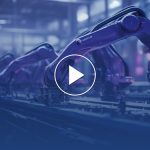Leveraging Machine Learning to Manage Operational Risks in Industrial Operations
Sensor data plays a vital role in ensuring operational safety and efficiency in industrial operations. Sensors are deployed widely in industrial settings to measure parameters such as temperature, pressure, flow, vibration and others. The data that flows from these sensors give operators an important window into the physical states of the facility’s assets.
Developments in IoT and automation are driving an even wider adoption of sensors. A recent report by Global Market Insights, predicts a 7% growth in the industrial sensor market by 2026 with 3 billion new units being shipped:
“The growing demand for sensors in various industrial verticals including oil & gas, manufacturing, energy & power, and healthcare will propel the industrial sensors industry demand. For instance, the rising implementation of sensors in the power sector to increase the efficiency of smart grids will add an advantage for the market growth.”
However, this wider adoption presents its own set of challenges. As the number of sensors increases, the task of monitoring the incoming data in real-time becomes more complex and more prone to human error. In addition, subtle data anomalies that can stem from sensor malfunctions such as flawed calibration, measurement drift, clogging/fouling and others may often go unnoticed by human eyes until it is too late. Even in cases where those events do not present an immediate risk, they significantly degrade the quality of incoming data which can skew the long-term view of the state of assets. In turn this poor data quality can severely undermine data analytics and predictive maintenance efforts.
Companies are beginning to understand the advantages of leveraging machine deep learning to (or ML) to tackle this problem in a scalable way. ML is already being used in other environments such as medical diagnostics and fraud prevention to detect anomalous patterns in large data sets with a higher degree of accuracy than humans can and nowadays, machine learning is essential in self-driving cars. It follows that a comparable approach can also be used to relieve the burden of manual analysis and reduce the scope for human error in industrial applications.
We are seeing a big growth in adoption of this approach over the past few years, especially in Europe and the Middle East through pilots and full installations in the Oil & Gas, Power Generation and Chemical sectors.
We believe that machine learning will play an increasingly important role in tackling both real-time monitoring of industrial sensors and the degradation of data quality over the long term. All indications point towards widespread adoption of this approach in the future and we look forward to being a big part of that growth.
About the author
 This article was written by Jonas Hellgren. He has a Computer Science background and over 25 years in technology companies, mostly startups. He led Vaultive as CEO to its successful acquisition by CyberArk before joining Aperio as CEO.
This article was written by Jonas Hellgren. He has a Computer Science background and over 25 years in technology companies, mostly startups. He led Vaultive as CEO to its successful acquisition by CyberArk before joining Aperio as CEO.



